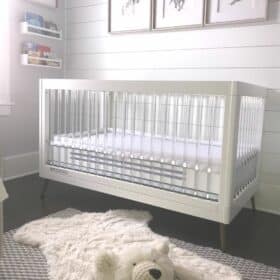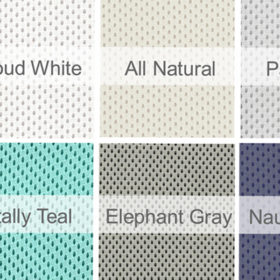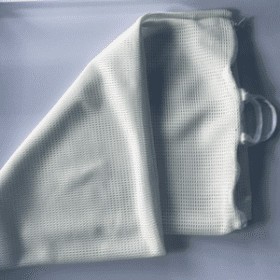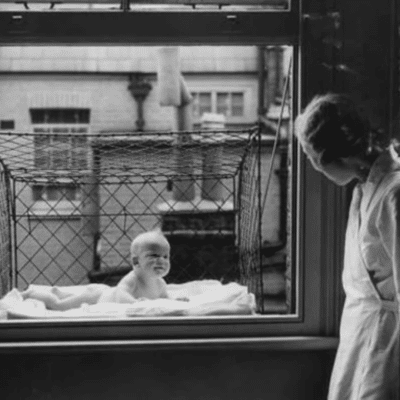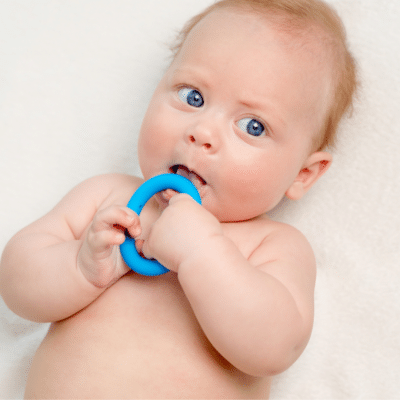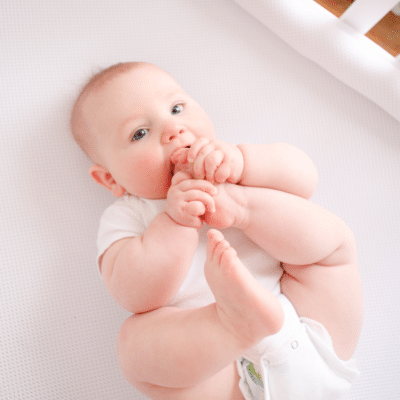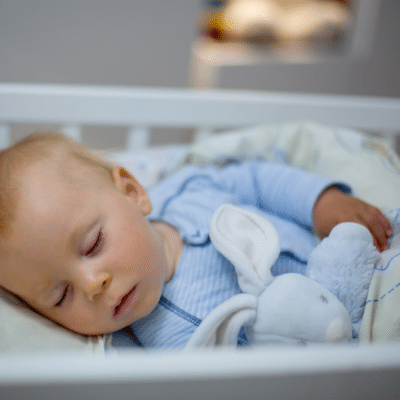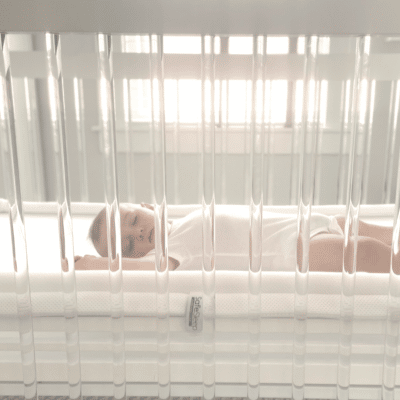No products in the cart.
Baby Sleep Training – Does it Work?
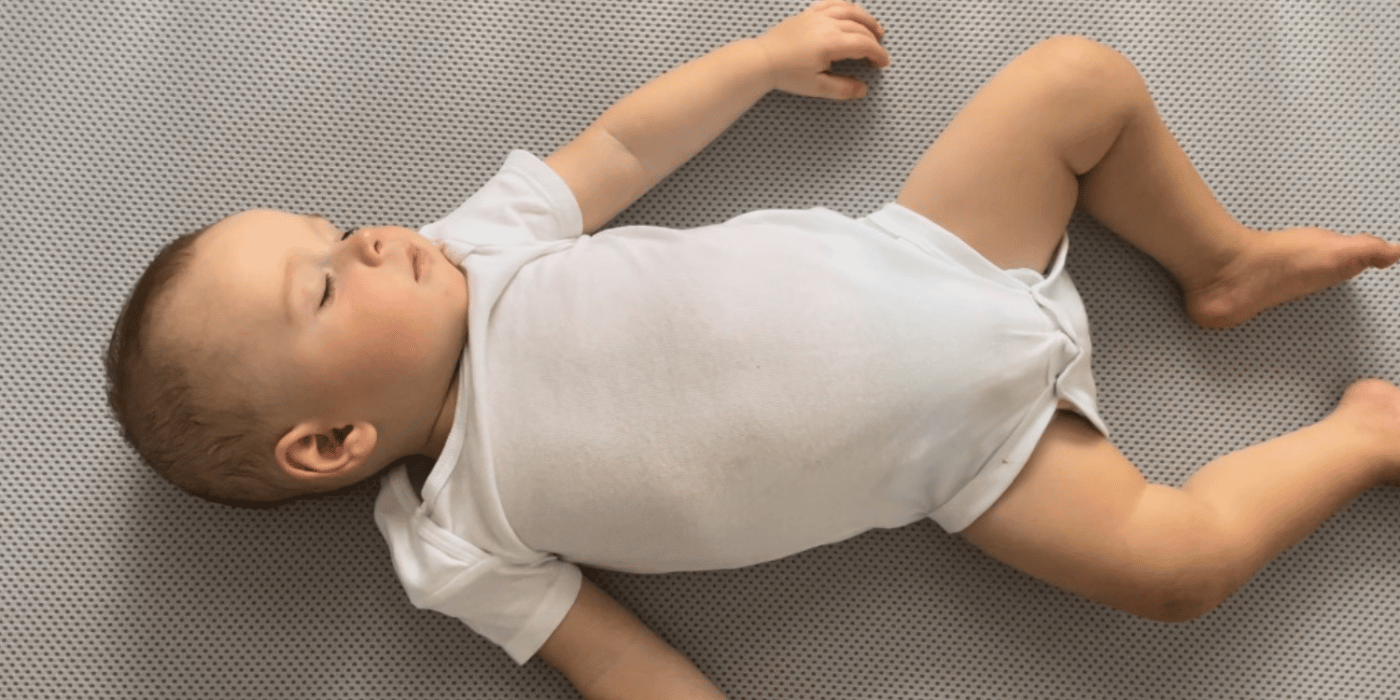
“Crying it out” is a baby sleep training method that lets your baby shed a few tears before running in and consoling them. This teaches baby how to self-soothe which is a crucial skill for babies to be able to fall asleep on their own.
Newborn’s Sleep Cycle
A newborn’s sleep cycle is 40 minutes long so at the end of each cycle instead of waking up and crying for mom. Baby will learn to self-soothe back to sleep (unless it’s time to eat of course).
Toddler’s Sleep Cycle
A toddler’s sleep cycle is 60 minutes so teaching baby how to fall back asleep on their own early on will set you up for years of healthy, successful sleep.
Rocking your baby to sleep is a habit that will prevent them from learning how to self-soothe. I know because this is what I did with my son. As a first time mom who was exhausted, my son would cry for me and I would pick him up right away and rock him to sleep and then go back to bed.
Doing this all night long every 1- 2 hours for 16 long weeks made my life fall apart. Severe sleep deprivation set in. I was so tired that my health deteriorated. Being so tiered, I began eating unhealthy foods, and stopped going to go to the gym like normal. Consequently, I gained 40 lbs.
The Effect of Not Having a Good Baby Sleep Training Plan
My marriage was affected – we both were so exhausted that we often argued. And need I say, there was no intimacy. We were so tired all the time. We dreaded nighttime sleep.
My business began to suffer which affected our livelihood and income. And the worst part of it all was, our baby was not getting healthy, good sleep.
Babies thrive and develop best when they sleep well. We desperately needed a change and wanted our son to thrive. So, we hired a certified child sleep consultant and our lives changed the very first night of implementing the sleep plan.
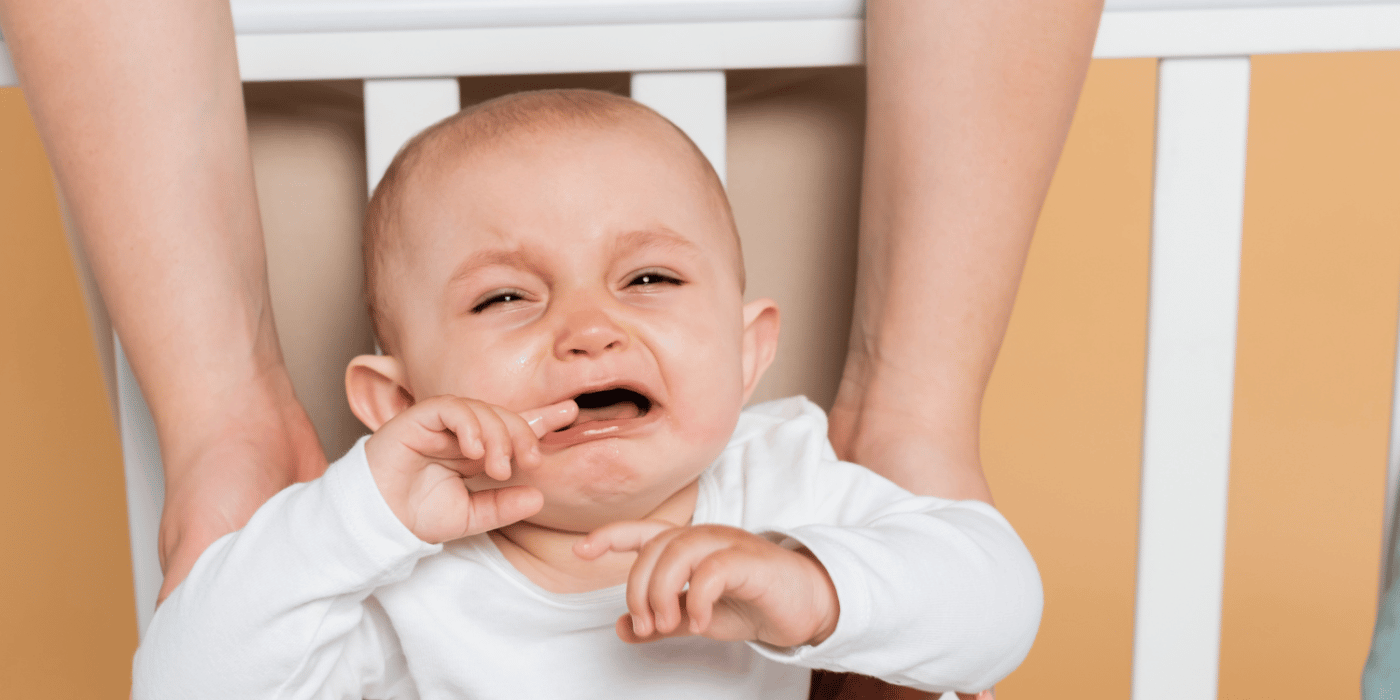
Three things we learned about the Cry it Out Method:
- It does NOT means letting your baby cry all night long or for hours at a time.
- WITHOUT proper training and support, Cry it Out probably won’t work. We tried it on our own from reading a book and articles on the internet, but it didn’t work.
I was worried about our baby crying so hard and we gave up almost right away. Working with a sleep consultant however, was completely different. She educated us on the gentle cry it out method and healthy sleep overall for babies.
Finally, she empowered us so when it came time to follow the plan, we knew exactly what to do. And also what to expect. We now had the confidence we would be successful. Most importantly, we knew our baby would be okay no matter how hard he cried in the allotted Cry it Out time frame.
- Crying it Out is harder for the parents than it is for the baby. Our sleep consultant assured us that babies are okay to cry and this is the best ways to teach them how to self-soothe on their own. It’s hard for parents to hear their babies cry, but she was right! We followed the plan and it worked.
I remember vividly when we started to implement the sleep plan to teach our 9 month old to fall asleep by himself. It was a few days before New Year’s, and after such severe sleep deprivation, we wanted to start the new year off right. We wanted to get back to a healthy sleep routine.
Every 1-2 hours – Ugh!
As a reminder, at this point I was waking up every 1-2 hours ALL NIGHT long to rock my son back to sleep. The sleep consultant explained to us what my baby felt was this, “Say you went to sleep comfy in your bed under the covers and then when you woke up, you found yourself sleeping outside on the front lawn.”
This would be scary and startling right? Well, this is how a baby feels when they are used to being rocked to sleep. They fall asleep in mom’s arms (or dad’s)
and while sleeping are placed down in the cradle or crib to sleep.
When they wake up in between sleep cycles, they realize – “Hey, wait a minute. I’m not in mom’s arms anymore.” The crying begins. Only after being in mom’s arms again will baby fall back asleep.
Other Elements to the Baby Sleep Training Plan
There are multiple other elements to the sleep plan such as a specific bedtime and nap routine. Also, there are sleep environment factors. So, everything together with the Cry it Out Method makes this process successful.
We first determined a key phrase. Something we say firmly when it’s time to sleep. We decided on, “Na-Night Vas. Time to Sleep.”
Day 1 began and we were 100% all in. You must be 100% committed for this to work. IT WILL WORK. DON’T GIVE UP.
We started at night. After completing the sleep routine and getting the sleep environment just right, we laid our baby in his crib.
We turned on the sound machine. Shut the night light off. The room was pitch black. I said, “Na-Nigh Vas. Time to Sleep.”
We have a SafeSleep® Breathe-Through Crib Mattress, so we don’t worry if he rolls over during sleep. He can breathe normally right through his mattress if he ends up face down. Thankfully, the SafeSleep® Breathe-Through Crib Mattress has removed anxiety from our sleep problems.
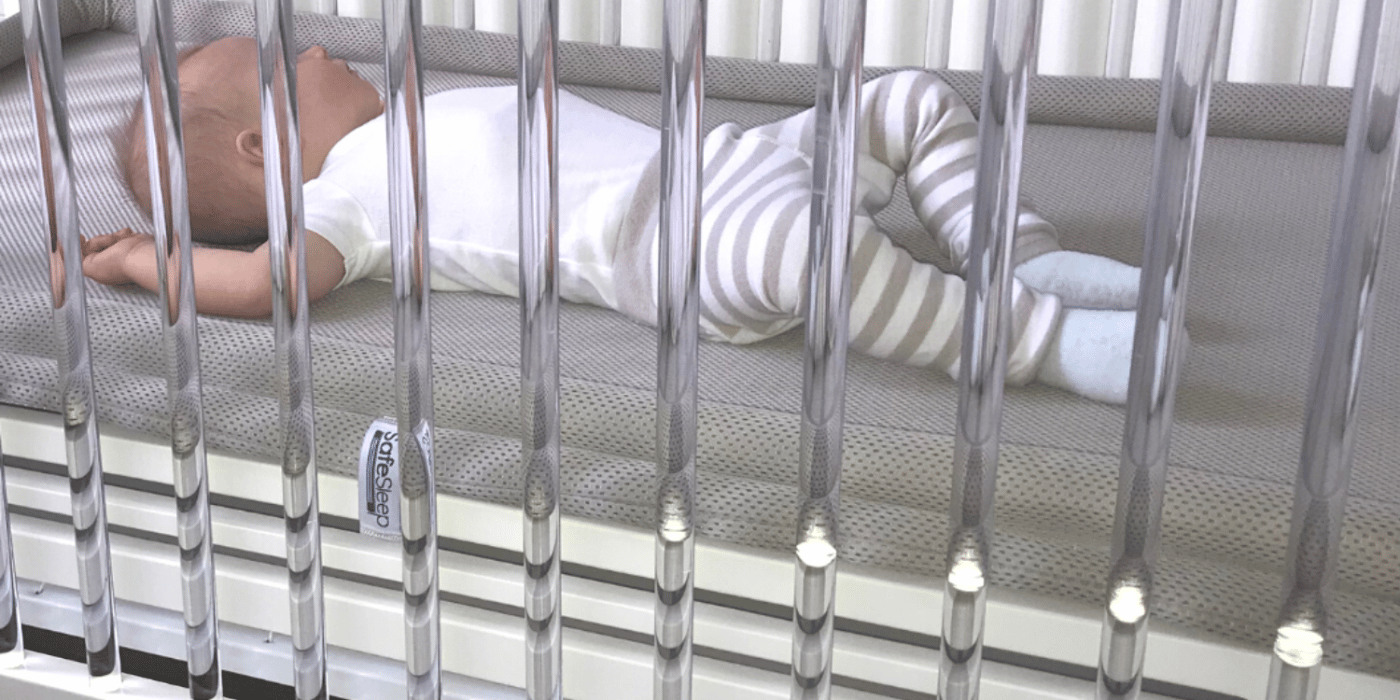
Next, we closed the door and left the room. We set the timer for 10 minutes. There’s an important rule too – if baby stops crying completely or has a low calming cry the timer must be reset to 10 minutes and start over.
Starting the Baby Sleep Training
Say your child cries for 4 minutes but then stops crying. Then, a minute later cries again. The timer restarts at 10 minutes when the crying starts again. These periods of crying and stopping is when your baby is teaching themselves to self soothe. This is why restarting the 10 minute timer based on baby crying and stopping is so crucial.
Our son cried hard for the first 10 minute timer. We kept reminding ourselves that our baby is okay even if he’s crying. And more importantly, we are helping him not hurting him.
When the timer went off, we went upstairs for the next step to console our baby. I let him know we were here for him. This took a very specific technique. Without turning the lights on and without picking up our baby, we went into the room. I closed the door behind us so my baby could not see us.. Next, I did a very loud shooshing sound over and over.
Our baby continued to cry very loudly. We we shooshed as loudly as possible for two minutes. I gently touched his head to let him know mama was here. However, I did not pick him up.
DO NOT PICK UP YOUR BABY
After 2 minutes, I said the key phase again with a firm voice, “Na-night Vas. Time to sleep.” And I shut the door.
I went back downstairs. My husband and I again set the 10 minute timer.
Our son continued to cry the entire time. After 10 minutes we repeated the process of going in the dark, not picking him up. And doing loud shooshing for 2 minutes. I touched my baby’s head lightly while I shooshed. Then as I left the room, “Na-night Vas. Time to Sleep.”
Again the timer was set for 10 minutes
The first night we had to set the timer 5 times. That is a total of 1 hour of setting the timer and shooshing for 2 minutes each time. Then something magical happened. Our son fell asleep!
He slept in his crib 6 hours straight on night one. It felt like heaven being able to sleep all night. I was shocked baby sleep training was working so fast.
Night two came. We did the exact same method. It’s SO important to stick to the method. Don’t change or waiver.
On night two, we only had to set the timer 4 times and do 4 shooshing times. Our baby slept 11 hours straight.
On night three, we only had to set the timer 3 times and go up and shoosh three times. Again he slept 11 hours straight.
On night four, we only had to set the timer 2 times and go up and shoosh twice. And, another 11 hours straight sleep.
On the fifth night, something miraculous happened. Our son cried a little. But within the first 10 minute timer he was asleep! We never had to go up and shoosh.
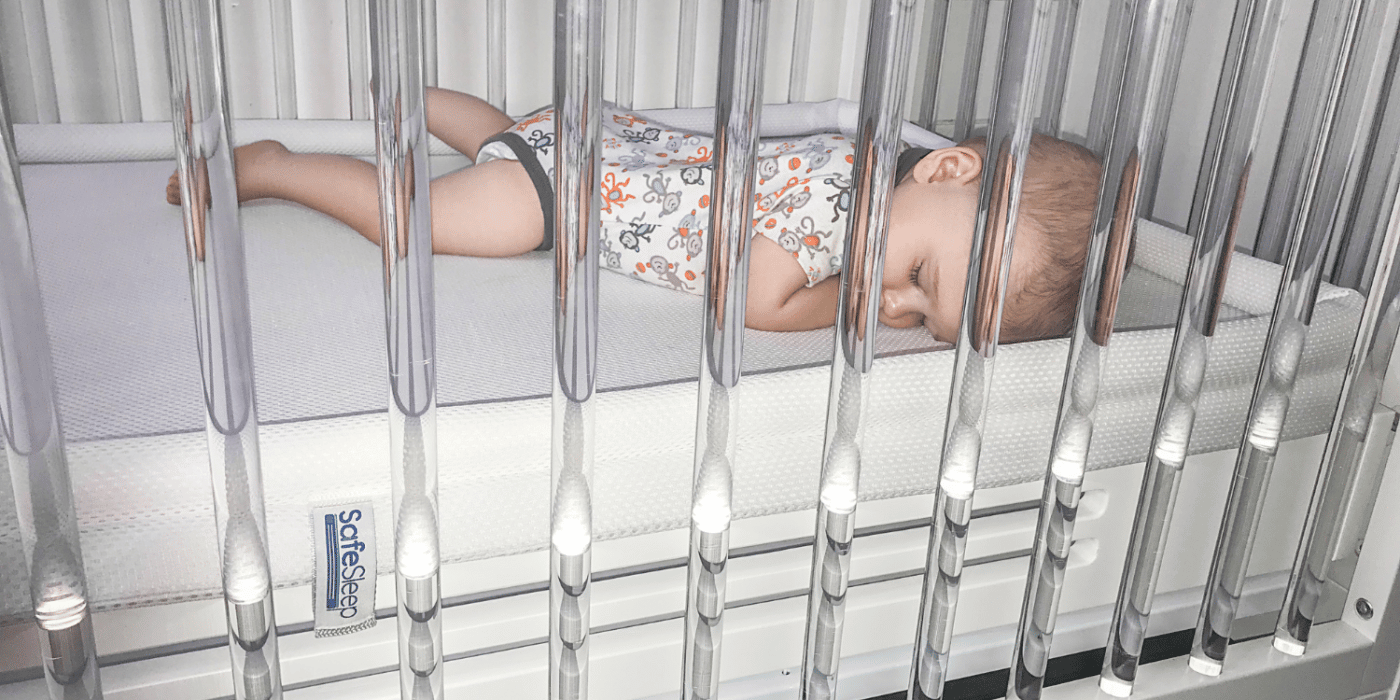
The sixth night and every night since there was NO crying when we put him down. By then he knew that it was time to sleep and he knew how to self-soothe himself to sleep.
Importance of Sleep
Sleep is so important for the harmony of a home and despite the strong opinions about the Cry it Out method, for us it worked like magic. We believe that without the help of a certified child sleep consultant we would have never been able to do the correct cry it out method and be confident enough to succeed.
Sleep Consultant to Help with Sleep Training Your Baby
We highly suggest parents work with a sleep consultant around 4 or 5 months of age when baby is first learning how to sleep, but if your baby is older and is still not sleeping, working with a sleep consultant will change your life.
We recommend finding a certified child sleep consultant at the Family Sleep Institute. We also recommend following safe sleep recommendations. We purchased the SafeSleep Breathe-Through Crib Mattress after our pediatrician recommended it, and we love it.
If you are not comfortable with the gentle cry it out method, you can try the Ferber Sleep Training Method. Dr. Ferber is created with developing this gentler approach to helping your baby sleep and self soothe.
When you are about to become a new parent, the number one advice people will give you is “Get your sleep now while you can because you will never sleep again.”
But I Doesn’t Have to be This Way?
As we explained above, there are ways to get your baby to sleep that are both safe and effective. You now know about the “Cry it Out” method. We are now going to explain the Ferber sleep training method.?
The Ferber method of sleep training is a modified version of the cry it out sleep method. Ferber sleep training also teaches your baby how to self soothe. This method also helps your baby put themselves back to sleep when they wake up in the middle of the night.
A Gentler Approach
The Ferber sleep training is a gentler approach to the cry it out method. Don’t be fooled, it still has your baby doing some crying. Consequently, this is not a tears free option to sleep training.
The Ferber sleep training method is a progressive waiting approach. This method has you checking in on your baby when they are crying. Next, you soothe your baby with verbal cues or a gentle rub or pat.
This article explains exactly what the Ferber sleep method is. But more importantly, how you can use it to help your little one sleep better.
What is the Ferber Sleep Method?
The Ferber sleep training method was developed by Dr. Richard Ferber. Hence, the name “Ferber Sleep Method.” This method is also known as graduated extinction. Specifically, it is an infant sleep training program that involves letting your baby cry it out in increasing intervals for a specified period of time.
The Ferber method of sleep training is designed to help your baby or toddler learn how to self-soothe. Self soothing, ultimately resulting in longer stretches of sleep through the night and during nap time.
The Ferber sleep method consists of letting your baby cry for a predetermined amount of time before parental intervention. In particular, avoiding prolonged exertional comfort. This is done by gradually increasing the amount of time before checking on your baby. These checks are done when your baby wakes quickly from sleep.
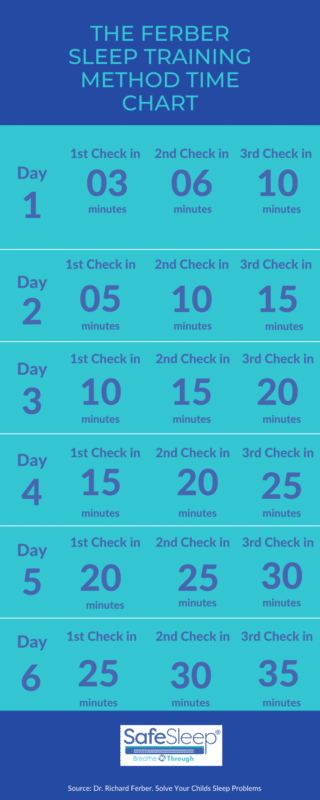
The graph above shows an example of the Ferber sleep training method. This method focuses on giving your baby a set amount of time before going into your baby’s room and intervening.
You can start with whatever amount of time you feel comfortable with, in this example we started with 3 minutes.
Night One
On night one, once you lay your baby down for bed you want to wait to start your timer until your baby starts crying. If your baby is still crying after 3 minutes, then you can go in and comfort your baby. Remember, it’s best to try and not pick your baby up. Moreover, be as quick as possible in your baby’s room.
If your baby is still crying, then you want to increase the time to 6 minutes before going back in to comfort your baby. You will want to repeat this for the first night increasing the timer to 10 minutes for each check.
Night Two
On night two, you want to repeat the same steps from the first night. However, you need adjust the time upward to 5 minutes before checking on your baby. Followed by, increasing the time to 15 minutes. Ultimately, checking on your baby every 15 minutes until your baby has fallen asleep.
The idea is to gradually increase the amount of time you wait to go in and comfort your baby, giving your baby a chance to self soothe. Ideally, your baby learns to self soothe so you will no longer need to go in and comfort your baby throughout the night or during nap time.
When is Your Baby Old Enough to Start Sleep Training?
You should always consult your pediatrician before starting any sleep training method. Most babies are typically ready to start sleep training when they are old enough to sleep through the night. This is generally when they no longer need to be fed at night. Night feedings are no longer necessary around 5-6 months.
Five to Six months is also when your baby is normally developmentally ready to start a sleep schedule. This is the the age when your baby is developing a circadian rhythm.
A circadian rhythm is defined as the natural internal process that regulates the sleep-wake cycle. This rhythm is repeated every 24 hours. Consequently, it is an essential developmental milestone that is needed for successful sleep training.
How Long Does Sleep Training Normally Take?
Typically, babies will cry for an hour or less. However, there are some babies that will cry for 1-2 hours the first few nights. The time it takes to sleep train your baby varies.
Some babies will be fully sleep trained in 2-3 nights. In other cases, sleep training can take as long as 1-2 weeks. The Ferber Sleep method typically takes 4 nights.
If sleep training isn’t going well and takes longer than 2 weeks, you should stop sleep training and consult your pediatrician. You can always try again later.
Providing the Perfect Sleep Environment is Important
Providing the perfect sleep environment is important to the success of sleep training. It is best to start off with a good foundation when starting sleep training. Moreover, establishing a good bedtime routine and providing a safe sleep environment for babies is key to successful sleep training.
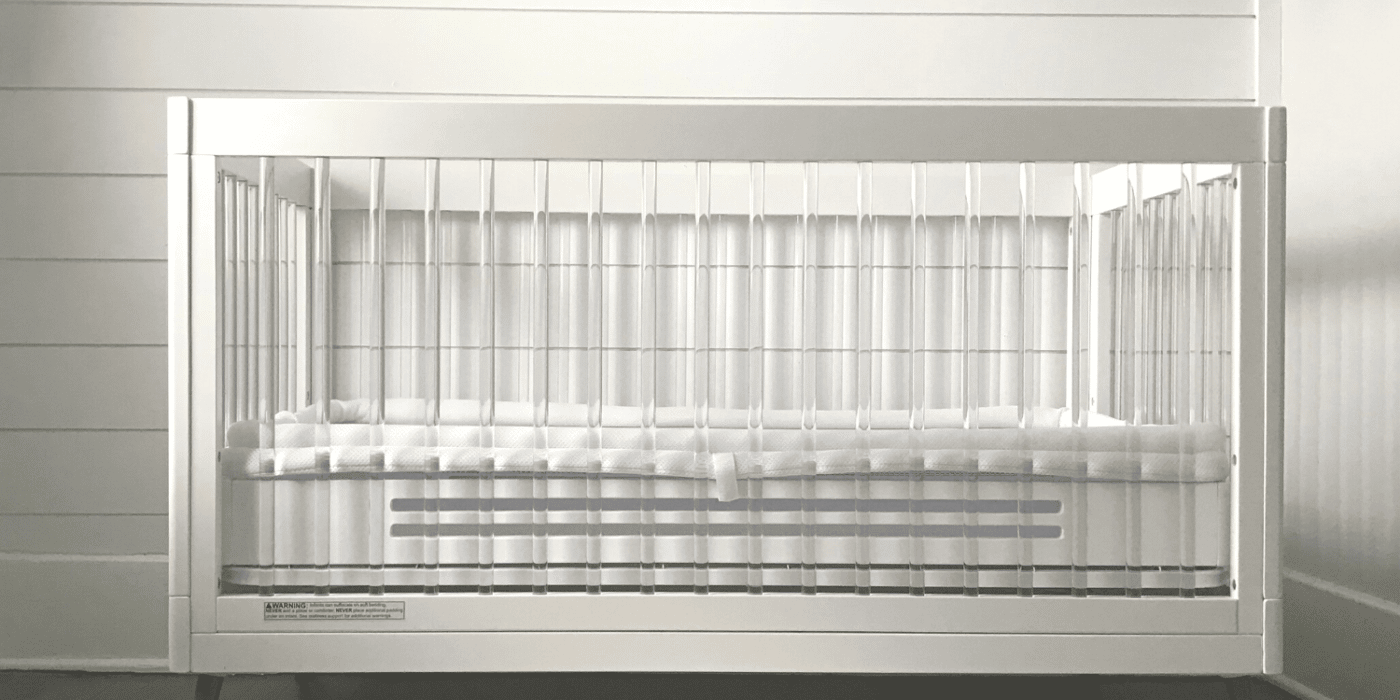
Basic Bedtime Routine & Safe Sleep Space for Baby Sleep Training
A basic bedtime routine can look like this; bath, pajamas, bottle, book/song and lay your baby down awake.
Another important factor in sleep training is the sleep environment. The AAP recommends all babies be placed alone, in a crib, on their backs, on a firm surface. You will want to make sure there is nothing in the crib with your baby. Make sure their crib mattress is firm.
The SafeSleep® breathe-through crib mattress is the number one pediatrician recommended crib mattress. It offers a safe, sanitary, firm, and breathe-through surface for your baby to sleep. Most importantly, when your baby rolls over, they can breathe normally through the SafeSleep® crib mattress. It is the only crib mattress that registers 100% fresh oxygen while a baby is breathing through the mattress. It’s no wonder pediatricians prefer it.
A dark quiet room with white noise is also recommended. Black out currents are great for creating a dark room. They also provide a sound barrier from unwanted outside noise. A sound machines or white noise is a must. Both help achieve the perfect sleep environment.
It’s Important to Know if Sleep Training is Right for Your Baby
Make sure your pediatrician has cleared your baby to start sleep training. There are some circumstances where you do not want to sleep train your baby. For example, your baby could have an underlying issue that prevents sleep training from being successful or even safe.
You should never start sleep training when your baby is sick. If your baby becomes sick after sleep training has already started, you should stop and start again when your baby is feeling better. Teething, acid reflux and ear infections can all affect sleep training.
After a few weeks, if sleep training is not working and your baby is still crying a lot during sleep time, it’s best if you take a break and consult with your pediatrician.
Listen to Your Baby
The Ferber Sleep Training Method is a useful tool to help your baby learn to self sooth. However, it is also important to listen to your baby. Some babies may not be ready to sleep train just yet.
Your baby won’t be ready if they are ill or if they are not developmentally ready. You can always check with your pediatrician before starting any type of sleep training method to see if your baby is ready.
Make sure you have a safe sleep environment for your baby. Be sure to follow the safe sleep guidelines provided by the American Academy of Pediatrics. We love and promote the SafeSleep® Breathe-Through Crib Mattress to all the moms and dads we work with. My own baby sleeps on a SafeSleep®. It truly eliminates many of the risks associated with safe sleep. I also love it for the convenience. It’s super easy to wash the entire mattress and no bathtub or shower is needed.
Remember to be flexibility with your baby’s sleep training. If your baby doesn’t seem to be responding to the Ferber Sleep training method, it is ok to quit and revisit it later.
Related Topics


